By taking the form of escalating shelves and winding bookcases, these homes step into a unique dimension. Seamlessly integrated into the home environments, these bookshelves alter the traditional library experience.
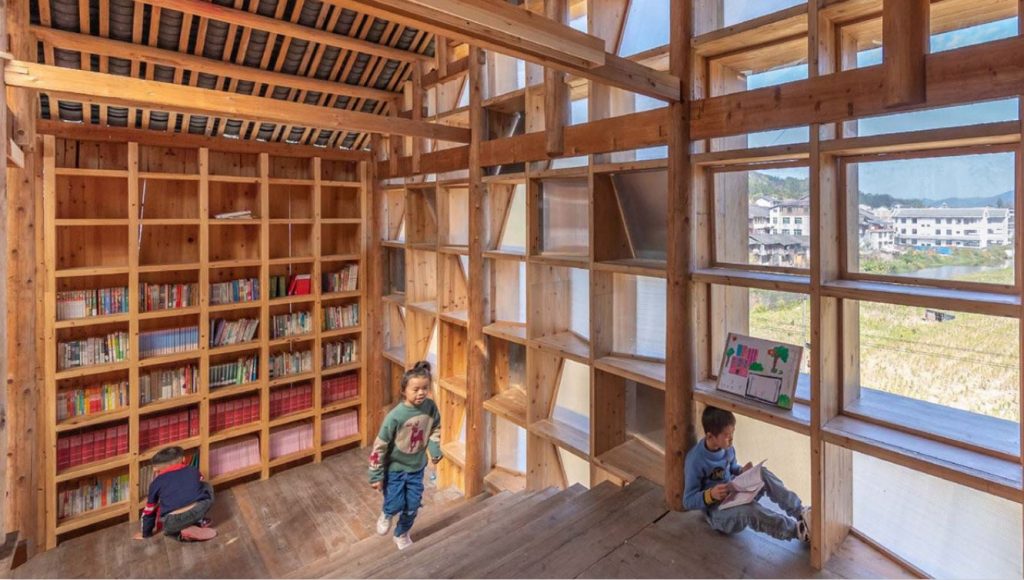
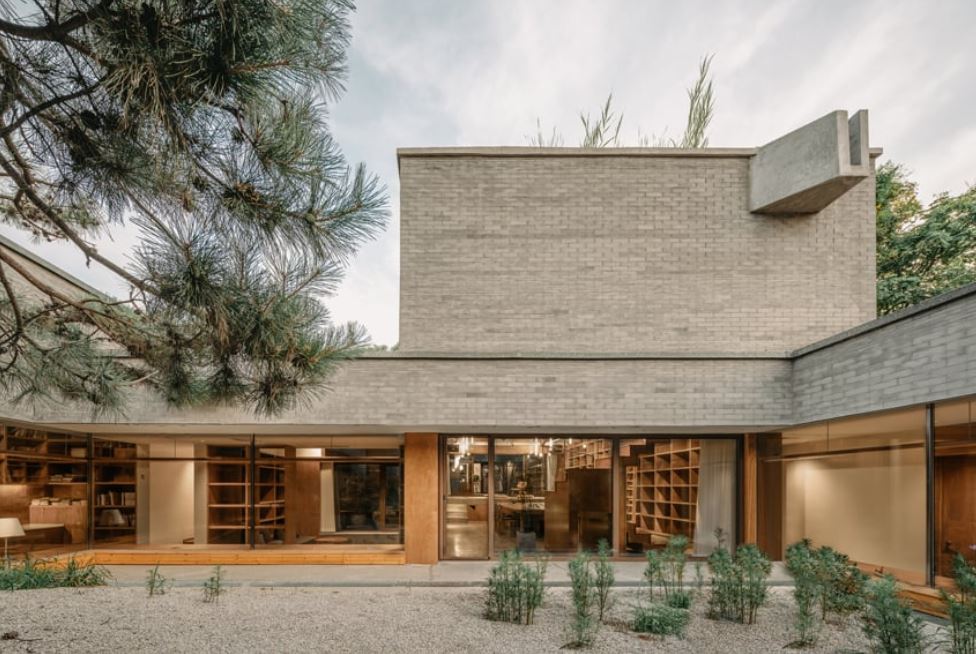
House Under the Boat by Chaoffice
Completed by Beijing-based studio Chaoffice in China’s Chaobai River wetlands, House Under the Boat incorporates a multitude of nooks and corners that are fitted with desks and bookshelves, housing a collection of over 20,000 books. As people move around within the building, they are encouraged to sit down and read or write whenever they want. The home was created for a professor as a space for both living and private study and informed by their recollections of travels to monasteries and ancient temples all over the world.
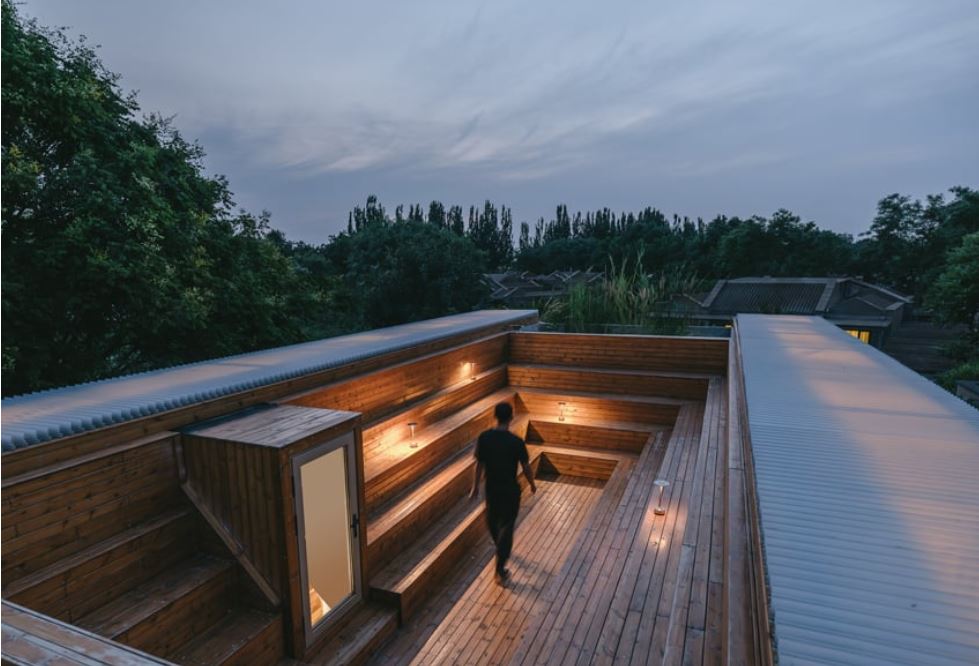
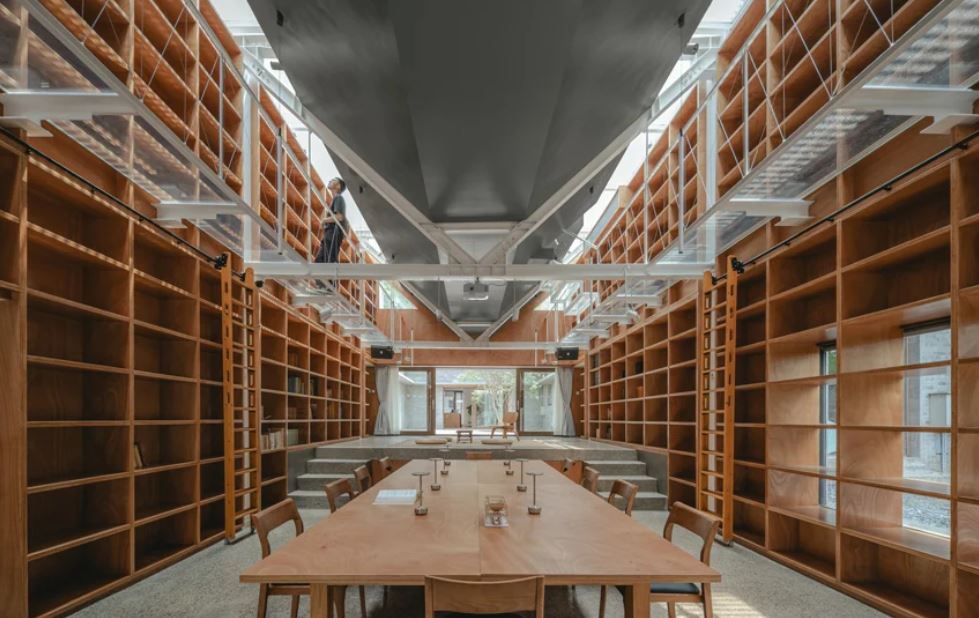
House Under the Boat by Chaoffice
The walls occupied by bookshelves reach a height of up to 6 meters, while the ceiling descends towards the middle of the room creating a double-height space akin to a ship’s hull. A steel structure suspends this inverted roof, with joints of the framework incorporating skylights through which daylight flows freely in.


House Under the Boat by Chaoffice
The descending roof forms a concave space above the roof itself. Because the people within this area rarely exceed the height of the external eaves, in an area where privacy amongst neighbors is highly valued, this approach still provides an accessible roof space connected to nature.
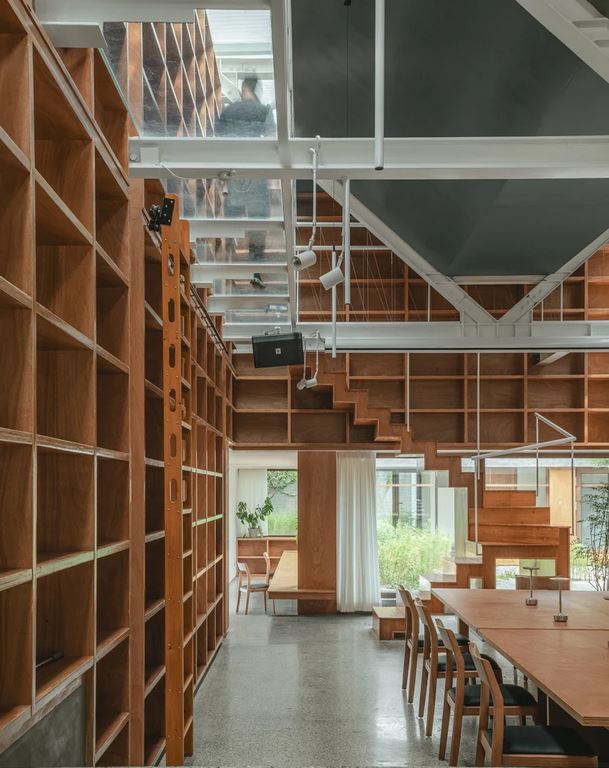
House Under the Boat by Chaoffice
The underlying materials harmonize functionality and aesthetics, with a white steel structure uniting the series of architectural elements including canopies and semi-transparent partitions.
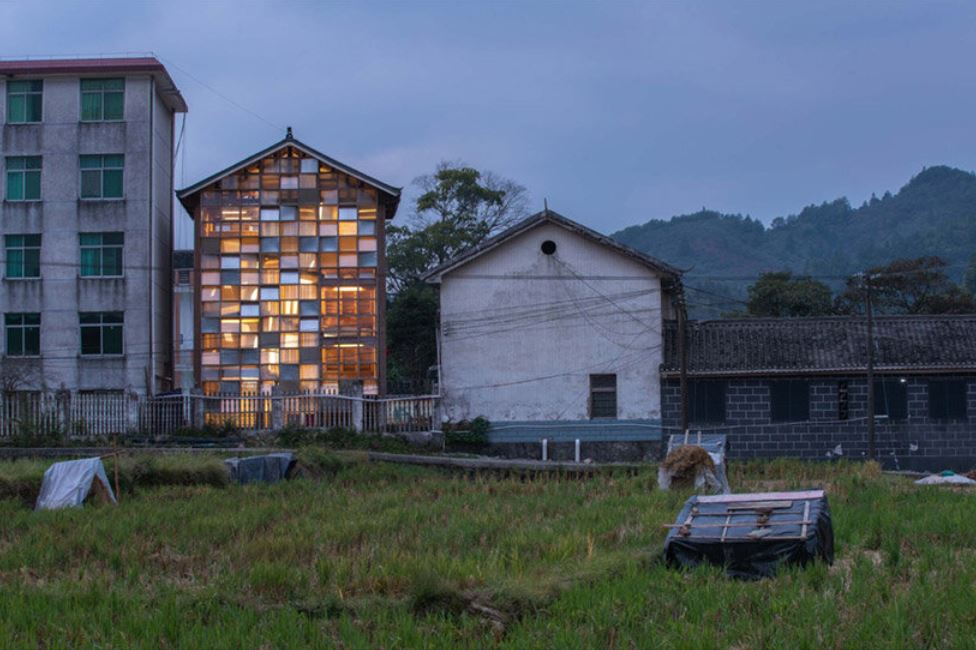
Pingtan Book House by condition_lab (also header image)
condition_lab, a design research lab based in Hong Kong, worked closely with local carpenters and students of architecture from CUHK school of architecture to develop a building for a library in the rural village of Pingtan, China.
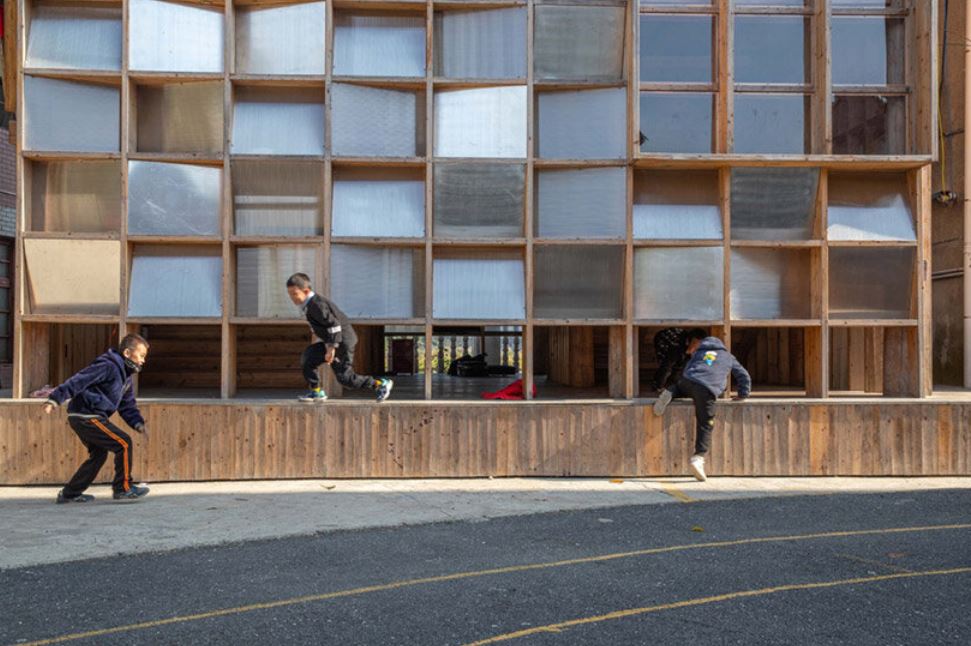
Pingtan Book House by condition_lab
Named Pingtan book house, the timber structure takes shape as an ‘infinitely looping’ staircase enclosed by a translucent, gridded facade. As they ascend the stairs, visitors pass through an expressive timber structure which integrates a matrix of bookshelves into its walls.

Pingtan Book House by condition_lab
Retaining the area’s architectural DNA, the project reimagines the traditional typology of the ‘galan’ timber frame house and adapts it to a contemporary design, reinterpreting such elements as stairs, walls, windows, and floors.
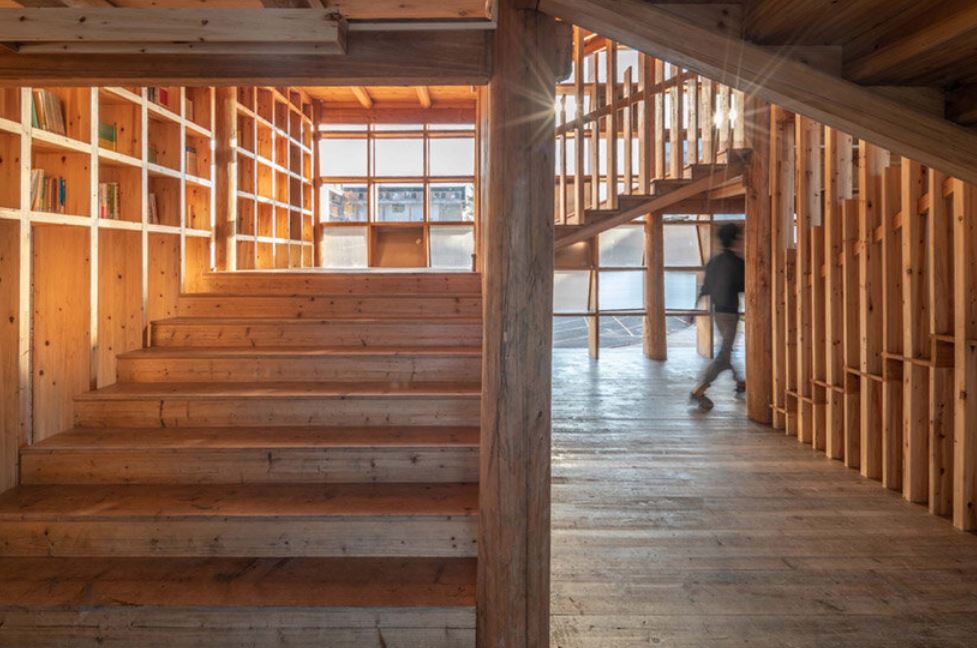
Pingtan Book House by condition_lab
The book house was built entirely using a sole material, Chinese fir, with only one ‘foreign’ material, which is the polycarbonate panels used for the façade. These panels allow sunlight to filter in during the day, and lend a glowing façade at night.

Bookstore-Cum-Hotel by Soda-Design and Suppose Design Office
And what about spending a night among the bookshelves? Back in 2014, Japanese bookstore Junkudo began offering overnight stays. This is when local Soda-Design and Suppose design office developed a concept of book and bed hotel that welcomes guests who like a little bed time story before they rest their heads in capsule-like sleeping rooms. At the moments, two branches of the hotel are located in Kyoto and Ikebukuro.
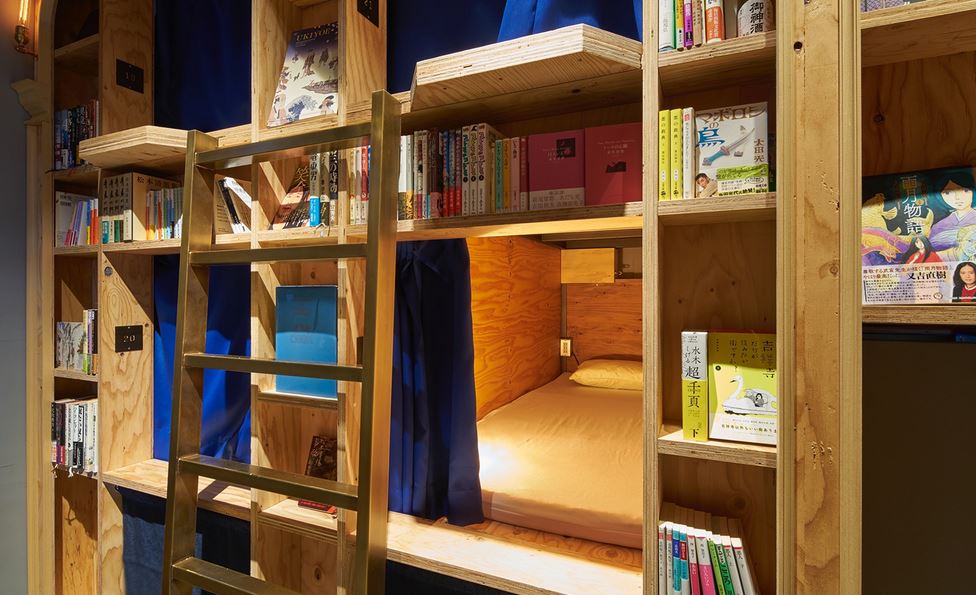
Bookstore-Cum-Hotel by Soda-Design and Suppose Design Office
The store is strictly experiential and books cannot be bought in the hotel. However, the concept has proved a hit for inquisitive travelers.